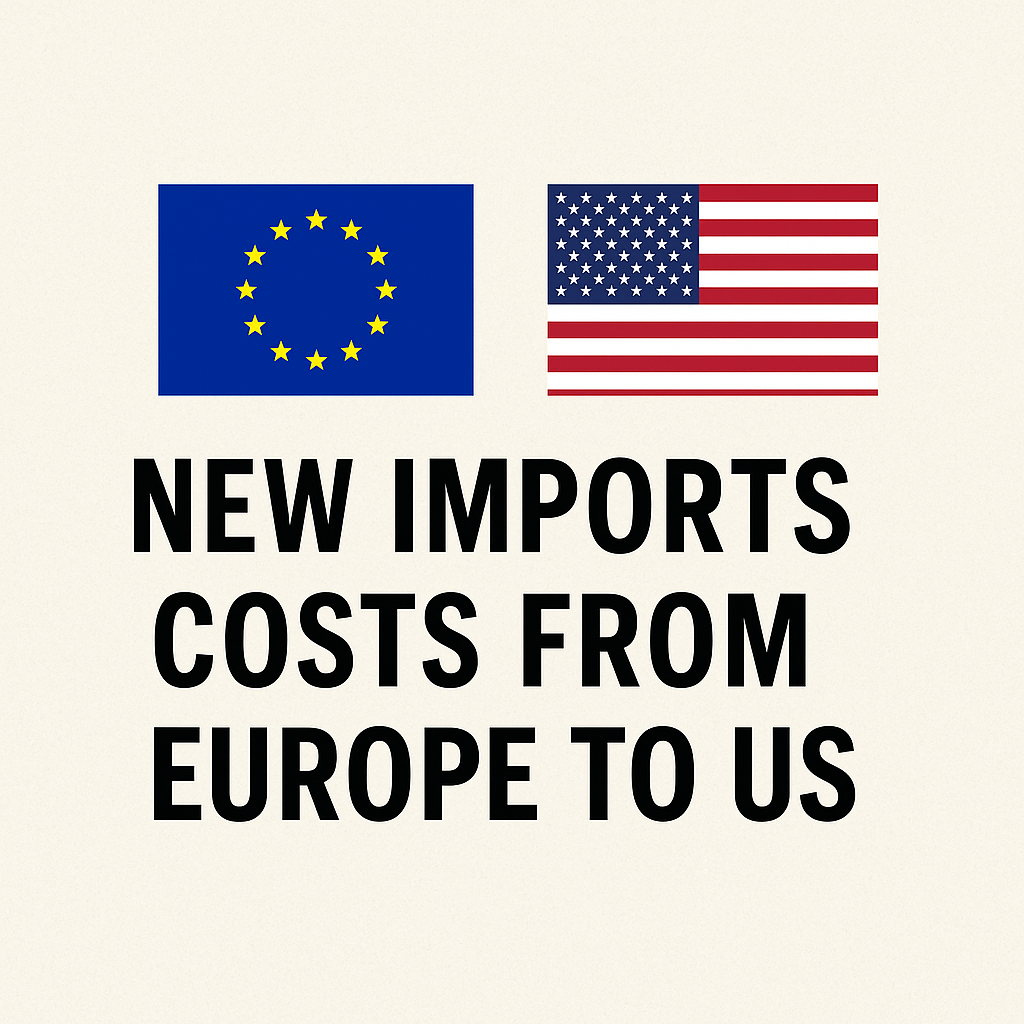
New Import Costs from Europe to the U.S. and Their Impact on Online Stores Like QuedeJapon.es
Share
New Import Costs from Europe to the U.S. and Their Impact on Online Stores Like QuedeJapón
In recent months, the cost of importing goods from Europe to the United States has changed significantly.
New U.S. customs regulations and rising international shipping prices are directly affecting European e-commerce businesses, logistics partners, and end consumers.
The result: higher shipping costs, longer delivery times, and stricter customs inspections.
Some stores have struggled to adjust, but others — like QuedeJapón
— have already adapted their pricing and logistics strategy to maintain smooth international operations.
The New Cost Landscape for U.S. Imports
Several factors are shaping this new scenario for European exporters and online sellers:
1. End of the $800 Customs Exemption
Until recently, the U.S. allowed imports valued below $800 to enter duty-free.
This rule has now changed: all international packages, regardless of their declared value, can be subject to customs clearance, taxes, and import fees.
That means additional documentation and handling time for every shipment.
2. Increased Shipping and Insurance Costs
Fuel surcharges, higher insurance premiums, and port congestion have led to a sharp rise in global freight prices.
On average, shipping a 2 kg parcel from Spain to the U.S. now costs 20–25 % more than it did in 2023.
This rise directly affects online sellers that rely on predictable delivery costs to set retail prices.
3. New Transatlantic Tariffs
Recent trade adjustments have introduced an average 15 % tariff on many European goods entering the United States.
Categories most affected include electronics, toys, collectibles, and specialty goods — key areas for QuedeJapón’s catalog.
How These Changes Affect Online Stores
For small and medium-sized e-commerce companies, these new costs translate into:
-
Reduced profit margins
-
More complex customs procedures
-
The need to adjust product pricing for different regions
-
Risk of customers facing unexpected fees upon delivery
To ensure a better customer experience, many businesses now integrate import duties and handling costs directly into their product prices.
That way, shoppers see the full price upfront — with no surprises later.
This is the approach that QuedeJapón has implemented for the U.S. market.
How QuedeJapón Manages the Transition
At QuedeJapón, our goal is to make international shopping effortless for fans of Japanese culture, retro gaming, and vintage electronics.
When customers in the United States order from us, the price displayed already includes all shipping and import-related expenses.
There are no hidden fees, no customs forms to fill out, and no unexpected charges at delivery.
For instance, when an American collector orders a Sharp Twin Famicom Original Restored
, the price shown already covers the full delivery process from Europe to the U.S. — including logistics, customs, and insurance.
That transparency ensures every buyer knows exactly what they’ll pay, from checkout to doorstep.
Turning Rising Costs into an Advantage
While global shipping costs and tariffs have created new challenges, they’ve also opened opportunities for smarter online businesses.
By adopting transparent, all-inclusive pricing, QuedeJapón transforms complexity into confidence: customers abroad can shop freely, knowing every cost is already accounted for.
Every item available for U.S. customers is carefully priced to reflect the full journey — from Japan to Europe to America — without adding extra charges at delivery.
That’s how QuedeJapón continues to make authentic Japanese consoles, collectibles, and electronics accessible worldwide, despite today’s stricter trade environment.
Importing across borders may be more complex than before, but buying genuine Japanese products from QuedeJapón remains simple, reliable, and worry-free.
Written by the QuedeJapón editorial team — specialists in Japanese imports, retro gaming, and international e-commerce.
